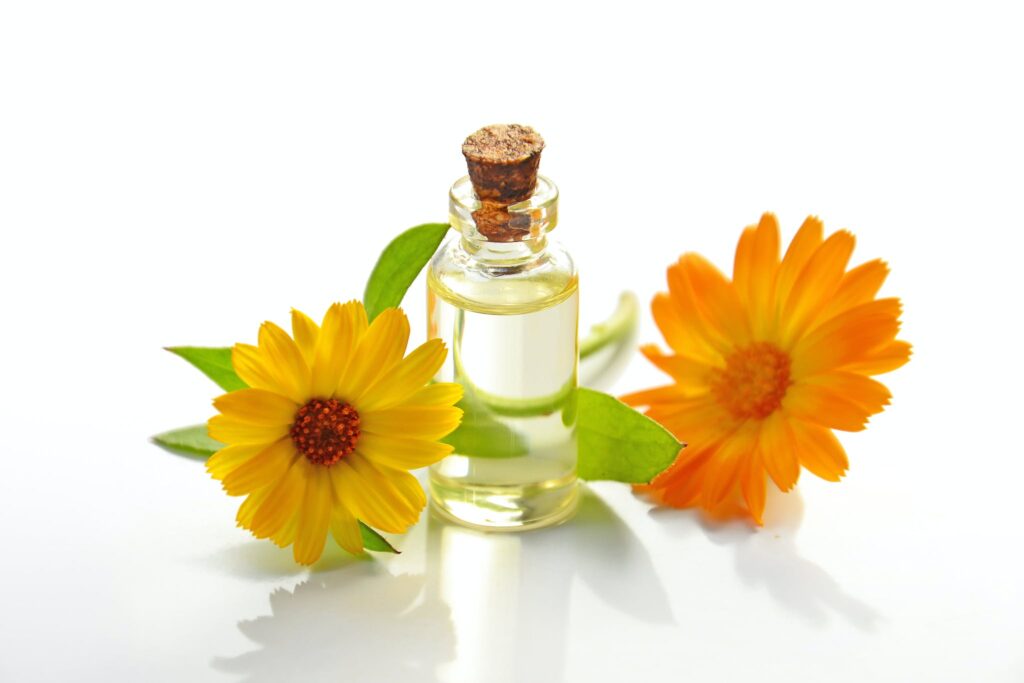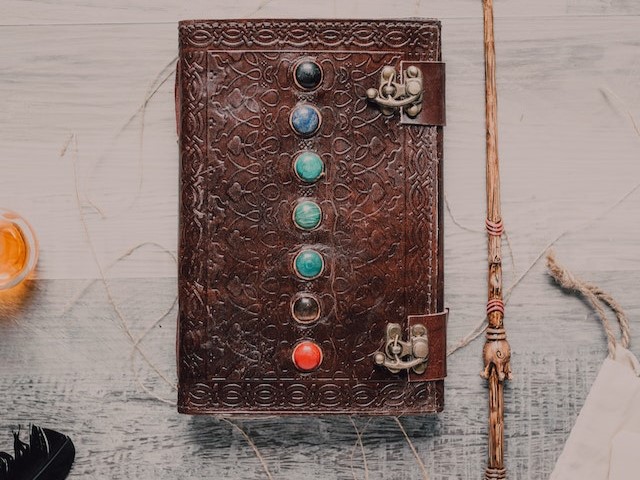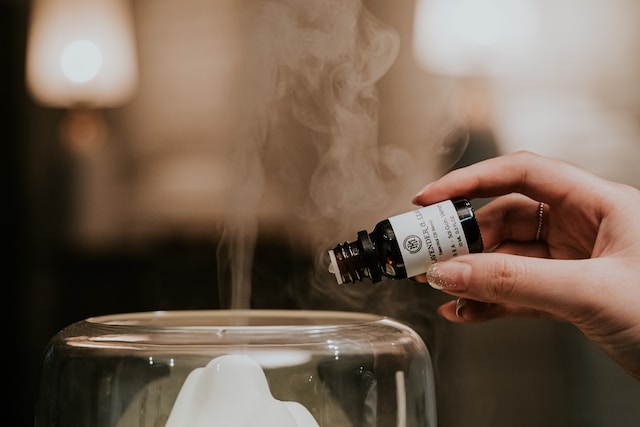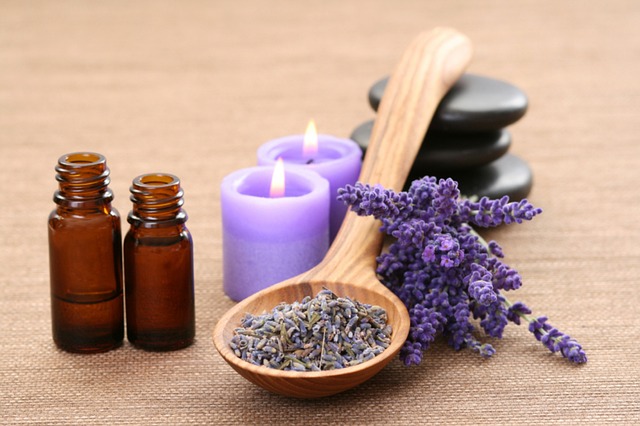Essential Oils For Beginners: A Comprehensive Guide To Getting Started With Aromatherapy
There are some affiliate links below, but they are all products I highly recommend. For more info, view my disclosure here.
Are you new to the world of essential oils and aromatherapy? Well, you’re in for a treat! Aromatherapy is a fascinating and powerful practice that can improve your physical and emotional well-being.
It may seem daunting at first, but we’re here to help you get started on your journey to discovering the benefits of these natural wonders.
In this comprehensive guide, we’ll cover the basics of essential oils, how to choose the right ones for your needs, and tips on incorporating them into your daily routine.
Whether you’re looking to boost your mood or improve your overall health, there’s an essential oil out there for you.
So let’s dive in and start exploring the world of aromatherapy together!
The Basics Of Aromatherapy
Aromatherapy is a holistic healing practice that utilizes natural plant extracts in the form of essential oils to promote physical and emotional well-being. It has been used for centuries by various cultures as a means to enhance the mind, body, and spirit connection.
Essential oils are derived from different parts of plants such as flowers, leaves, stems, roots, and even bark. They are highly concentrated and carry the unique essence and properties of the plant they come from.
To truly appreciate aromatherapy’s benefits, it’s important to understand how essential oils interact with our senses. When we inhale these potent fragrances, they stimulate our olfactory system – the part of the brain responsible for our sense of smell. This can trigger certain emotions or memories associated with specific scents.
When essential oils are absorbed through our skin during a massage or bath, their therapeutic properties can have positive effects on our overall health and well-being.
If you’re new to aromatherapy, start by exploring some popular essential oils such as lavender, eucalyptus, tea tree oil, and lemon. These versatile oils can be used in various ways including personal care products like soap or lotion; home cleaning solutions; diffusers for creating an aromatic atmosphere; or even added to bathwater for a relaxing soak.
Remember though that essential oils are powerful substances and should always be diluted before applying directly to your skin or ingesting them.
To help ensure success on your aromatherapy journey, it’s crucial to invest in high-quality essential oils from reputable sources. Look for pure oils without any additives or synthetic ingredients – these will provide you with the most authentic experience possible.
Consider investing in a diffuser to help disperse the aromatic molecules throughout your space easily and safely.
With time and practice, you’ll soon discover how incorporating aromatherapy into your daily routine can enhance your overall well-being and transform your life.
Understanding The Different Types Of Essential Oils
Now that we’ve covered the basics of essential oils and aromatherapy, it’s time to dive deeper into understanding the different types of essential oils available. When you’re just starting out, the sheer variety of essential oils can be overwhelming. But don’t worry; we’re here to help you navigate through this fascinating world.
In this section, we will explore the various categories of essential oils and their unique properties. This knowledge will not only help you choose which oils are best suited for your needs but also enable you to make well-informed decisions when building your collection.
Let’s discuss how essential oils are typically grouped based on their aroma profiles. There are generally six categories: floral, citrus, earthy, spicy, herbaceous, and woody.
Floral scents include popular oils like lavender, rose, and jasmine – these tend to have calming and soothing effects on both the mind and body. Citrus scents such as lemon, orange, and grapefruit are known for their uplifting and energizing properties. Earthy scents like patchouli and vetiver can create a grounding atmosphere with their deep-rooted fragrances. Spicy scents including cinnamon and clove possess warming qualities that stimulate circulation while offering comfort during cooler months. Herbaceous scents like basil or peppermint typically provide a refreshing boost in mental clarity or focus. Lastly, woody scents such as cedarwood or sandalwood evoke feelings of stability and balance.
It’s important to consider the therapeutic properties of each essential oil when making your selection. Essential oils can be further classified into various groups based on their specific benefits – for example: relaxing (e.g., lavender), stimulating (e.g., eucalyptus), balancing (e.g., geranium), or analgesic (e.g., rosemary).
It is crucial to note that individual responses to essential oils may vary; therefore it is recommended to experiment with different oils to find the ones that work best for you and your specific needs.
To wrap up, understanding the different types of essential oils is a vital step in getting started with aromatherapy. By familiarizing yourself with their various aroma profiles and therapeutic properties, you can begin to build a collection tailored to your preferences and requirements.
So go ahead, explore the world of essential oils, and embark on your journey towards holistic wellness through the power of aromatherapy.
Selecting The Right Essential Oils For Your Needs
Diving into the world of essential oils can be overwhelming, but identifying your specific needs and preferences will make the process much more enjoyable.
There are hundreds of essential oils available, each with its own unique aroma and therapeutic properties. Understanding which oils best suit your needs is crucial for maximizing the benefits of aromatherapy.
Begin by considering why you want to use essential oils in the first place. Are you looking to reduce stress or anxiety? Do you want to improve your mood or boost your energy levels? Perhaps you’re seeking relief from physical discomfort such as headaches or muscle tension.
Once you’ve determined your goals, research which essential oils are known to address these concerns effectively. For example, lavender is widely recognized for its calming effects, while peppermint oil has a reputation for alleviating headaches and boosting energy levels.
When selecting essential oils, it’s also important to consider quality and purity. Not all essential oils on the market are created equal – some may be diluted with carrier oils or contain synthetic additives that could potentially diminish their effectiveness or cause adverse reactions. Look for reputable brands that emphasize purity and provide transparent information about their sourcing and production processes.
Consider seeking guidance from a certified aromatherapist who can recommend high-quality products tailored to your specific needs.
As you become more familiar with different essential oils and their uses, don’t be afraid to experiment with blending them together. Combining multiple oils can create synergistic effects that enhance their individual therapeutic properties while providing a unique sensory experience.
Keep in mind that everyone’s preferences and sensitivities vary; what works well for one person may not work for another. Therefore, it’s crucial to listen to your body and adjust your approach accordingly as you continue exploring the world of aromatherapy.
Methods Of Using Essential Oils Safely
Now that you’re familiar with the basics of essential oils, it’s important to learn about the various methods for using them safely. There are several ways to enjoy the benefits of aromatherapy without causing harm to yourself or others. By following proper guidelines, you can ensure a positive and enjoyable experience with essential oils.
One popular method for using essential oils is through diffusion. This involves dispersing the oil into the air using a diffuser device specifically designed for this purpose. Diffusers come in various designs and functions, but they all serve to spread the aroma of your chosen essential oil throughout a room or space.
It’s important not to overdo it – just a few drops of oil are usually enough for an effective diffusion session. Also, be cautious when diffusing potent oils such as cinnamon or clove, as they can cause respiratory irritation if used in excess.
Another way to use essential oils safely is by applying them topically on your skin. However, it’s crucial never to apply undiluted essential oils directly on your skin as this may lead to irritation or even burns. Instead, dilute the essential oil with a carrier oil like coconut, almond, or jojoba before applying it to your body.
A common guideline is mixing 1-2 drops of essential oil per teaspoon of carrier oil for adults and even less for children or those with sensitive skin.
A third method involves incorporating essential oils into your daily routine through various self-care practices like bathing or massage therapy. You can add a few drops of your chosen oil into bathwater, mix them with Epsom salts, or blend them with massage lotion before applying it during a therapeutic session.
Just remember always to dilute the oils properly and choose non-irritating varieties when using these applications near sensitive areas like eyes and mucous membranes.
By familiarizing yourself with these safe methods of using essential oils and adhering to recommended guidelines, you’ll be able to enjoy the many benefits of aromatherapy without compromising your well-being. As you explore this new world of natural healing, remember to listen to your body and adjust your practices accordingly.
With time and practice, you’ll gain a deeper understanding of which essential oils work best for you and can start tailoring your aromatherapy experience to meet your unique needs.
Incorporating Aromatherapy Into Your Daily Routine
As you become more familiar with the world of essential oils, you may find yourself wondering how to incorporate aromatherapy into your daily routine. By seamlessly integrating these natural remedies into various aspects of your life, you can enjoy their numerous benefits and enhance your overall well-being. This section will delve into practical ways to make aromatherapy a part of your everyday life, ensuring that you reap the full rewards of this ancient practice.
Kickstarting your day with aromatherapy can help set a positive tone for the hours ahead. One way to do this is by diffusing uplifting essential oils such as lemon or orange during your morning routine. These citrus scents are known to boost energy levels and improve mood.
Alternatively, you can also add a few drops of essential oil onto a cotton pad and place it in your shower before turning on the hot water – the steam will release the aroma, creating an invigorating experience that helps awaken both body and mind.
Throughout the day, there are numerous opportunities to harness the power of essential oils. For instance, if you work in an office setting, consider using a desk diffuser with focus-enhancing scents such as rosemary or peppermint to maintain concentration and productivity.
If stress levels begin to rise during the day, keep a small rollerball bottle filled with calming lavender or chamomile oil on hand for quick application to pulse points like wrists or temples – this can help alleviate anxiety and create a sense of tranquility amidst chaos.
Transforming your nightly routine into a soothing ritual with aromatherapy encourages relaxation and restful sleep. Creating an atmosphere conducive to slumber is easy: simply diffuse calming scents like lavender or ylang-ylang in your bedroom about 30 minutes prior bedtime.
Another option is to make a pillow spray by combining water and relaxing essential oils in a small spray bottle – lightly misting your pillowcase before laying down allows these comforting fragrances to gently lull you into a peaceful night’s rest.
By incorporating essential oils into your daily routine, you’ll discover an increased sense of balance and well-being, allowing you to fully enjoy the many benefits that aromatherapy has to offer.
Exploring Aromatherapy For Health And Wellness
Now that you have a better understanding of how to incorporate aromatherapy into your daily routine, it’s time to delve deeper into the various ways this practice can enhance your overall health and wellness. Aromatherapy is not only a pleasant experience but also offers numerous benefits for both mental and physical well-being.
In this section, we’ll explore some of the most common therapeutic uses of essential oils and how they can promote a healthier lifestyle.
One of the primary reasons people turn to aromatherapy is for stress relief and relaxation. Essential oils like lavender, chamomile, and bergamot are known for their calming properties, making them ideal for reducing anxiety or promoting restful sleep. To create a soothing atmosphere in your home or workplace, you can diffuse these oils with an ultrasonic diffuser or add a few drops to an unscented candle. You might also consider incorporating stress-relieving essential oils into your bathwater or massage oil. Remember to always dilute essential oils in a carrier oil before applying them directly to the skin.
Another popular application of essential oils is for pain relief and muscle recovery. Many athletes and fitness enthusiasts use aromatherapy as part of their post-workout routine to alleviate sore muscles and speed up recovery time. Essential oils like eucalyptus, peppermint, and rosemary have analgesic properties that help reduce inflammation and soothe discomfort when applied topically (in diluted form) to affected areas. Some essential oil blends are specifically designed with pain relief in mind – look out for products containing ingredients such as arnica or capsaicin.
Aside from relaxation and pain management, essential oils can play a significant role in maintaining overall health by supporting the immune system. Oils such as tea tree, oregano, and frankincense possess antimicrobial properties that may help protect against harmful bacteria, viruses, and fungi. Diffusing these potent oils in your living space can create a cleaner, healthier environment for you and your family. Making essential oils a regular part of your self-care routine may help improve mental clarity, boost mood, and increase energy levels.
As you continue to explore the world of aromatherapy, don’t be afraid to experiment with different oil combinations and applications to find what works best for your unique needs and preferences.
Expanding Your Knowledge And Skills In Aromatherapy
So, you’ve dipped your toes into the world of essential oils and are hungry for more – we don’t blame you! As your experience with aromatherapy grows, so too should your knowledge and skills. There’s a wealth of information out there waiting to be discovered, as well as plenty of opportunities to expand your horizons. In this section, we’ll share some tips on how to take your passion for essential oils to the next level.
First up, let’s talk about education. While there are countless blogs, books, and online resources available, nothing beats a structured course or workshop when it comes to learning new techniques and deepening your understanding of aromatherapy.
Look for classes offered by certified aromatherapists or reputable institutions such as the National Association for Holistic Aromatherapy (NAHA) or the Alliance of International Aromatherapists (AIA). These courses will not only teach you advanced blending methods but also help you gain a strong foundation in essential oil safety and chemistry.
Next on our list is experimentation. Don’t be afraid to play with different oils and combinations in order to find what works best for you. Remember that everyone’s preferences and reactions can vary – what may be soothing for one person might not have the same effect on someone else.
Create custom blends tailored specifically to your needs: try using essential oils that complement each other based on their therapeutic properties or opt for unexpected pairings that simply smell divine together. Keep a journal documenting your mixtures along with any observations you make regarding their efficacy; this will prove invaluable as you continue refining your crafting skills.
As you advance further into the realm of aromatherapy, consider connecting with like-minded individuals who share your enthusiasm for essential oils. Attend local workshops or seminars where you can exchange ideas and learn from others’ experiences.
Join online forums or social media groups dedicated to aromatherapy discussions – these platforms offer great opportunities to seek advice, share your own insights, and even discover new oils or techniques you hadn’t encountered before. Embracing the sense of community that exists among aromatherapy aficionados will not only enhance your knowledge but also make the journey all the more enjoyable.

Conclusion
Starting your aromatherapy journey may seem daunting at first, but with the right guidance and resources, you’ll be enjoying the benefits of essential oils in no time.
Remember to always prioritize safety when handling these potent oils and find ways to incorporate them into your daily routine that suit your individual needs and preferences.
As you continue to explore the world of aromatherapy, you’ll discover its vast potential for promoting health and wellness.
So go ahead, dive in, and experience the power of essential oils for yourself.
Happy diffusing!





